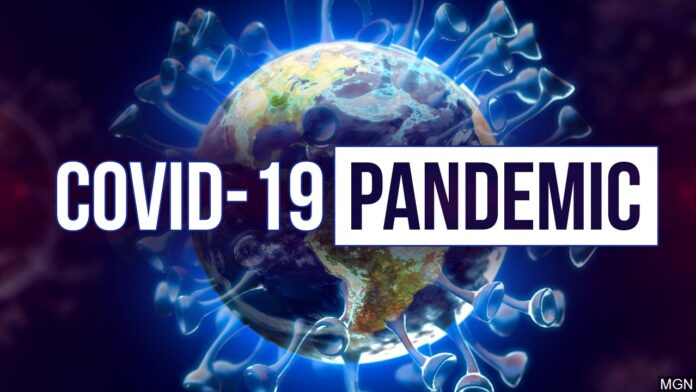As the Rio Grande Valley continues to experience a massive surge in COVID-19 cases and related deaths, those who listened in to U.S. Rep. Filemon Vela’s telephone town hall on Wednesday heard advice from two medical professionals who helped get the virus under control in New York City.
One of them was Israel Rocha Jr., an Elsa native and former CEO of Doctors Hospital Renaissance in Edinburg, now CEO of NYC Health + Hospitals/Elmhurst, the Queens hospital that got hit early and hard by the pandemic. The other was Dr. Joseph Masci with Mount Sinai, among New York’s top infectious disease specialists.
Their experiences could help the Valley navigate the crisis now that COVID-19 is running rampant here.
“ This is a catastrophe really for any health care system, and there may be no good way to avoid it,” Masci said. “You just have to anticipate it and be prepared for it. You’re going to need to expand the ability to house patients in intensive care settings if your experience is going to be anything like ours was in New York. As we know now Florida, Texas and California and certain other hot spots are beginning to look a lot like New York did in the beginning. We’re in a period between the current outbreak and anticipating the next one.”
Before March, unbeknownst to anyone, there were around 20,000 cases of the virus that were mostly asymptomatic or slightly symptomatic and thus easy to confuse with the flu, he said. What happened next is what’s happening in the Valley.
“ Then the huge surge happened. … Once you begin to see a surge, you have to be ready for a massive acceleration within a few days or a week or two,” Masci said. “We saw that (in New York). We reached a point where we have 400 covid patients in our hospital at the same time.”
Doctors at first assumed COVID-19 was primarily a severe pneumonia, though it turned out it’s much more insidious and damaging, he said.
“ Now after we’ve seen the outbreak come under control in New York, what we’re now seeing are the long-term consequences of this in a lot of our patients,” Masci said. “What we learned during our very, very acute phase of this is there’s a lot of other organ damage we’ve had many patients requiring dialysis, many who had chronic problems, strokes, heart attacks, etc. Right now we’re trying to set up the long term services that those patients are going to need following the outbreak. This is not like a bad flu outbreak. This leaves a lot of people with disabling illnesses even after the recover. This is a lot to prepare for.”
The most effective way to get COVID-19 under control, as one study after another continues to show, is to wear a mask, he said.
“ Any kind of mask,” Masci said. “That means N95, surgical masks or cloth masks. They all work. That’s a measure that we can begin to lean on if we can just get it implemented and get people to buy into it. Masks are incredibly effective at this. They are life savers.”
If the country waits for evidence beyond the shadow of a doubt that facial coverings work, “we’re going to pay the price,” he said.
Rocha said New York was blindsided by the virus, but was able to get through the outbreak in part because doctors, nurses and other medical personnel came from around the country to help. Now that the virus is practically everywhere, that’s no longer viable, though Rocha said he and others who were on the front lines in New York can share — and are sharing — how that city dealt with the crisis.
“ We definitely can share our experiences with anyone who needs them. We did endure a very difficult time. We did learn a lot and now we’re seeing things that we experienced happen throughout the country,” he said.
A big part of it comes down to the basics: wear a facial covering, shelter in place, limit travel to essential business, socially distance, wash hands frequently. That’s what got the virus under control in New York and it can do the same here, Rocha said. Health care systems must also work collectively, as they did in New York, Rocha said.
“ Seeing the levels that are happening right now, it definitely is the time to make sure that organization, planning public advocacy, encouraging people to please stay home and take this very, very seriously,” he said. “(These are) the essential things that need to happen, making sure to curtail non-essential movement until it’s back under control. That’s how we were able to curb the virus.”




